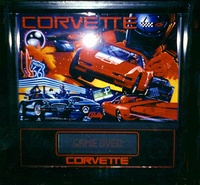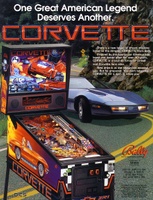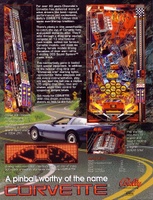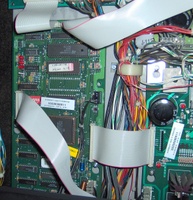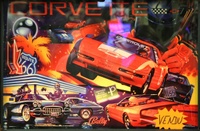
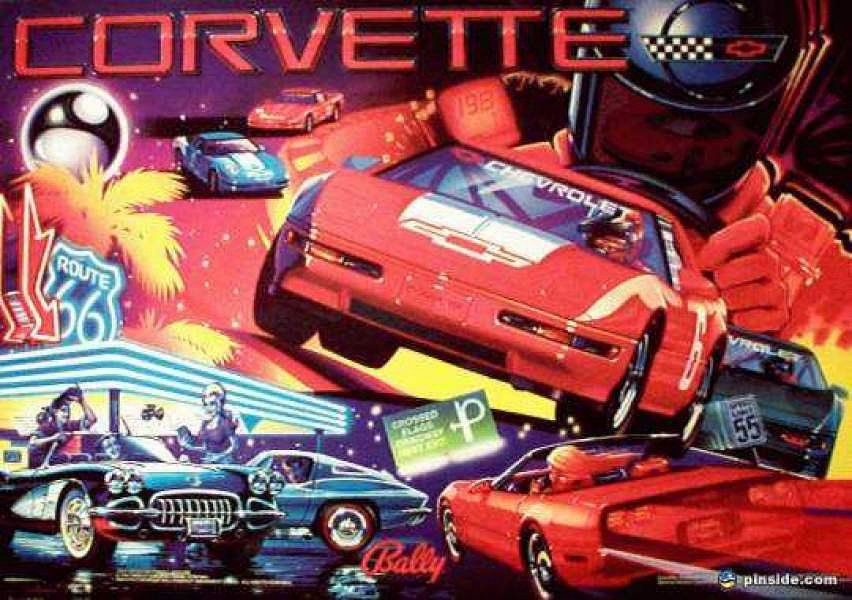
Corvette
Designer George Gomez tells us about his original design for this game and of changes that were made prior to production:At the time Williams was making wide bodies and so my design began as a widebody, but it didn't get very far. No widebody whitewoods were ever built. I originally designed the game with drop targets and the code for this is still in the game. The decals said B-2-K which was the Callaway Turbo option. A 4-Speed shifter was bolted to the side of the game and was used to shift gears in the dragstrip mode. That code also is still there. Some of the prototypes were built with these features and somewhere I have photos. Numerous prototypes were built with the shifters and also I retrofitted one onto a production game. Numerous switches (ramp ends), flashers, and lights were removed, along with the targets and shifter, to get the game within the bill of materials budgets. Pictured in this listing is an example of the so-called "NCM" games, made for the National Corvette Museum located in Bowling Green, Kentucky. We were unable to reach Tom Uban for input about them, but designer George Gomez provided this information:Museum games were very early production games. They were not prototypes. The playfield that you refer to in the image is one of the 17 prototype games, several of these playfields went to the museum for display purposes. However, museum games did have the special NCM welcome message in the code, this may have been the only difference in those games, other than that they were very early in the production run. I personally sold Chip Miller his game. At the time he was one of the key guys in the ZR1 registry and many of those guys bought games from us at the museum. I don�t remember the exact number of games that we took to the museum. I believe it was either 6 or 9. One went into the gift shop where I believe it still resides. I set up displays on the design of the game including drawings, the prototype playfields, and many other development items such as models within the museum. One was in the display cases at the base of the Spire, the other was in a hallway display case near the Corvette toys exhibit in the museum. During the grand opening weekend celebration the games were operated 24 hours a day at dollar play to benefit a charity. I worked the games with some of the other members of my team promoting and exposing people to the game. With me were Tom Kopera, mechanical engineer on the game; Bill Grupp, software engineer assisting Tom Uban; Roger Sharpe, director of licensing; and Barb Rosenthal, the Bally-Williams marketing director. If memory serves, I took 3 prototype playfields with me to the museum for the grand opening. The playfields were left in the care of the museum's curators. I was disappointed to learn that somehow they were let go from the museum's collection. Someone in Bowling Green ended up with one of them, he tells me that he bought it from a museum employee.

